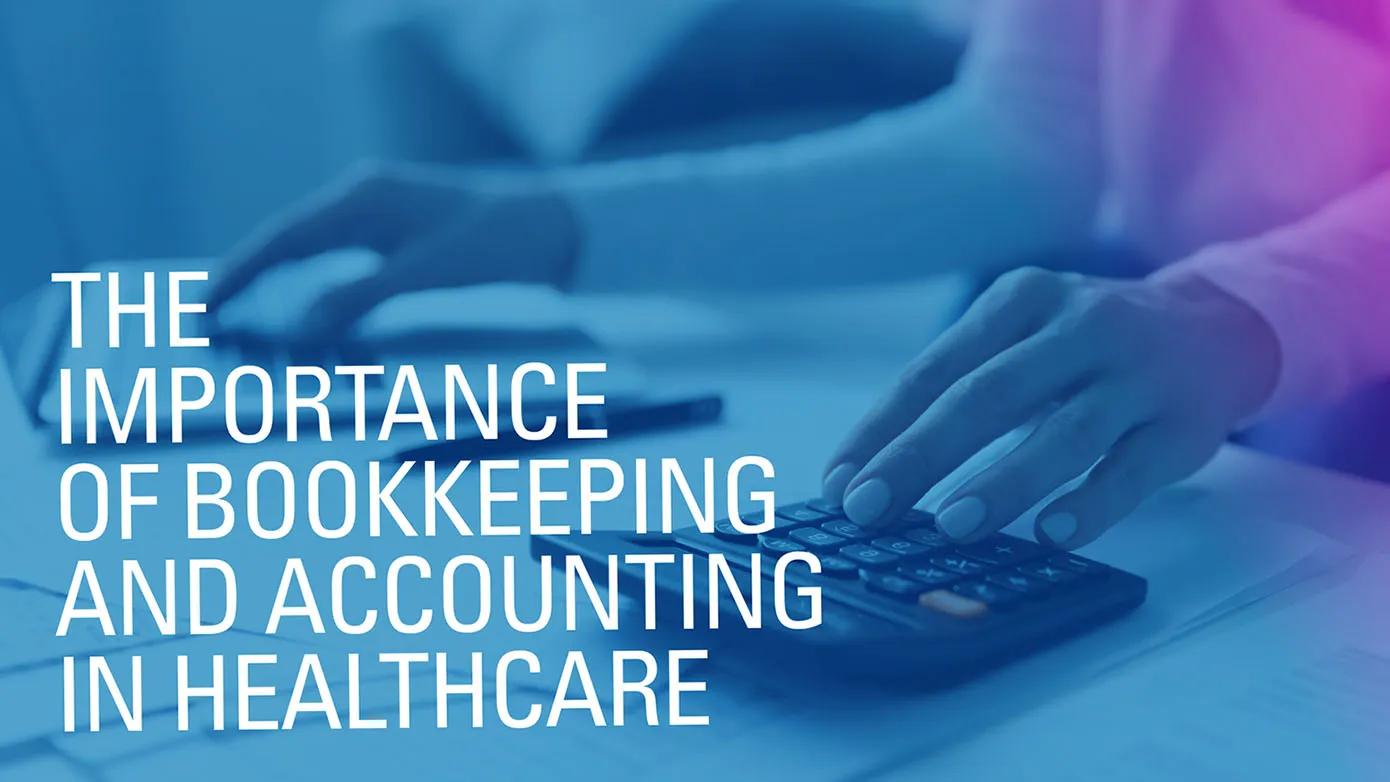What Is a Medical Coder? Duties, Salary, Outlook

If you’re looking for a job with good long-term prospects, a career in the healthcare field could be a good fit.
According to the Bureau of Labor Statistics (BLS), employment in healthcare occupations is projected to grow 16 percent from 2020 to 2030, much faster than the average for all occupations, adding about 2.6 million new jobs.
The high demand for qualified healthcare professionals can mean more job security and room to grow than in other fields. This article will help describe what your career would be like in the healthcare industry as a medical coder.
Read on to get a behind the scenes look at the duties of a medical coder.
What Is a Medical Coder?
Medical coders update patient records with standardized information needed for data management and billing purposes. Every time a doctor, nurse, or other healthcare provider performs a service, a code needs to be assigned to each diagnosis and procedure. For example, let’s assume you’re a medical coder reviewing the health record of a patient who comes into a medical office for an X-ray.
Once the technician completes the X-ray, he or she will notate the procedure on the patient’s chart. A doctor will then examine the image to diagnose the source of the injury, whether it’s a fracture or simply a sprain, and may also prescribe treatment, such as a sling or a cast. It’ll be your job to read these notes and apply the appropriate codes for the X-ray, the doctor’s examination, the diagnosis, and any treatment provided.
The specific codes you assign will determine how the medical office bills the insurance company for the patient’s visit. Your main job tasks will include analyzing medical charts and assigning codes.
Your codes will help when patients need their insurance company to cover a claim, and proper coding will help to ensure the provider is reimbursed by the insurer in a timely manner. The main coding systems used by medical coders include:
- ICD (International Classification of Diseases), with the most recent edition being ICD-10
- CPT (Current Procedure Terminology)
- HCPCS (Healthcare Common Procedure Coding System)
What Does a Medical Coder Do?
It’s important to understand that medical billing and medical coding are two different job functions. Some offices may have one person perform both tasks, though larger facilities may employ separate billing and coding specialists.
In cases where the work is divided into two jobs, the medical coder will primarily focus on updating patient health records and verifying they are properly coded, while the medical biller will spend much of the day submitting and following up on claims with insurance companies.
Medical coders may be known by different job titles. Other names for medical coding jobs include:
- Medical coding specialist
- Diagnostic coder
- Medical coding analyst
- Clinical coding officer
- Medical coding auditor
Medical Coder Job Outlook
The U.S. Bureau of Labor Statistics (BLS) projects that employment of medical records and health information technicians, including medical coders, will grow 9% between 2020 and 2030, which is much faster than the average for all professions. This strong job outlook can make it easier for qualified coders to find work.
The BLS reports that medical secretaries earned a median salary of $45,240 per year as of May 2020. However, attaining industry certification, such as the Certified Professional Coder (CPC®) credential from the AAPC, along with gaining years of experience, may lead to higher earnings.
Where Do Medical Coders Work?
The office structure will vary depending on where you work. If you are employed in a hospital system, you’ll likely work with other medical coders, and the billing team may be considered a separate department. However, if you work in a small office, you might be the only medical coding and billing employee on the team.
Hospital settings may seem more demanding because of the number of patients, but having fellow coders to share the workload can help keep things manageable. In addition, being able to learn from experienced coding staff can make it easier for a new medical coder to learn the ropes.
Smaller offices and private practices can also be a very appealing work environment, as the setting can make it easier to build relationships with other staff members and regular patients. You may also have an opportunity to learn other aspects of medical office work on the job, which can enhance your experience and qualifications.
A Day in the Life of a Medical Coder
Your day may start with logging onto your computer and opening the various programs you need to perform your job. You’ll most likely have a company email account, one or more databases, and other software programs you deal with on a daily basis.
Once you’ve opened these applications, you’ll check for updated patient charts. You’ll have to prioritize the charts and choose which ones you’ll handle first. Your training will help you decide which charts are urgent, and which ones can wait.
Different employers may assign you different types of medical coding tasks. In a small practice, you might be responsible for processing all patient charts, while a large hospital may have you specialize in one area of coding. For example, you might work solely with inpatient surgeries or with outpatient surgeries, or you may work as an auditor who checks other coders’ work for accuracy.
Usually when you’re hired into a new role, you’ll have an opportunity to expand and enhance your coding skills. However, most employers look for candidates with knowledge of multiple coding systems, as they typically need minimal training.
Coding mistakes can cost your employer money or delay reimbursement from insurers, so it’s important to have a careful system in place for coding each procedure. First, you should identify the type of claim you are handling.
Next, you have to consider who will be reading the codes you provide. Some will be used by the insurance company to process claims, while others may primarily be for internal use to help your office maintain accurate records. This work requires a high level of organization along with a strong knowledge of medical terminology and an understanding of billing procedures.
After prioritizing your charts, you’ll spend most of your day performing a variety of coding tasks. In addition to assigning codes, you’ll be reviewing medical charts, taking notes, and possibly assisting with billing.
A large part of your day will take place in front of the computer, so your workstation should be set up in a way that helps to improve your efficiency and productivity. There are tens of thousands of medical codes, so your employer doesn’t expect you to memorize all of them.
Your employer will typically have expectations as to how many charts you’ll need to complete each day, so it’s important to manage your time wisely. If your job includes both coding and billing, you may want to experiment with ways to work more efficiently. Does it make sense to complete all of the coding first before switching to billing-related tasks, or is it faster to code and then bill for each patient visit as you work your way through the charts?
At the end of the workday, once you’ve finished coding all of the patient charts, you’ll likely have a few tasks left to complete. First, you’ll want to save your work and log out of all your computer programs, and ensure any paper-based records are properly filed away. Due to patient privacy and confidentiality laws, you don’t want to leave health records visible to any unauthorized individuals who may walk past your desk.
If you are employed by a large healthcare facility that has coders working on multiple shifts, you may need to clear off your desk space if another medical coder will be working there on the next shift.
Finally, if any new charts have come in at the end of the day, you may want to review and prioritize them so that you’ll be one step ahead on the next day’s work.
Medical Coder Examples
To give you a better idea of a day in the life of a medical coder, let’s look at a few examples of what a typical job task may look like.
Here is a sample medical report:
Patient is a 20-year-old female who presents with a cough. Non-acute and non-chronic bronchitis is suspected. Prescribed patient azithromycin, 1 gram.
As a medical coder, you would need to know the diagnosis code for bronchitis that is not specified as acute or chronic, which is J40 according to ICD-10. This code gets entered into the facility’s computer system.
Next, you will input the code for the patient’s treatment. The HCPCS code for 1 gram of azithromycin is Q0144, so you would enter this too. If you provide medical billing services as well — which is common with medical coders and billers — the diagnosis and treatments codes enable you to send a claim to the patient’s insurance provider for reimbursement.
Here’s another medical coder example:
Patient is a 65-year-old male who presents with pain while urinating. Urinary tract infection is suspected. Urinalysis and urine culture are performed, finding that bacterial infection is present. Administered 10 ml sulfamethoxazole via injection.
In this case, the patient presented with painful urination. The ICD-10 code for painful micturition, unspecified is R30.9. The CPT code for a urinalysis bacteriuria screen is 81007 and the code for the subsequent bacterial urine culture can be either 87086 or 87088 depending on whether it was a quantitative colony count or if it identified each isolate. Obtaining more information from the healthcare provider is necessary for choosing the right one.
Once the procedural codes are entered, the next step is to enter the diagnosis. The diagnosis code for urinary tract infection, site not specified is N39.0. Treatment via a 10 ml sulfamethoxazole injection is coded S0039.
Why Consider a Career as a Medical Coder?
In addition to being in an in-demand job with an 9% projected growth rate, benefits include:
- Pursuing a healthcare career within a matter of months
- Access to potential advancements and leadership roles by gaining experience
- Access to similar areas of healthcare, i.e. medical auditing and compliance
- Learning new information as healthcare continues to evolve
- The ability to help facilities check that patient records are correct and operate smoothly and efficiently
Medical Coding from Home
Once you’ve graduated and earned your certification (if you’ve opted to do so), you can start applying for medical coder jobs at hospitals, doctors’ offices, and other healthcare facilities. Another option might be medical coding from home.
There might be opportunities for remote medical coders. A quick search of online job sites provides a list of options across the United States. To work as a medical coder from home, you need access to high-speed internet and your own computer equipment.
Many home-based medical coder jobs also require that you have your certification and some type of coding experience. Therefore, you may have to find an in-person medical coding job before you’re able to provide this service remotely.
How to Become a Medical Coder
To enter into the medical coding profession, you’ll first need your high school diploma, GED, or equivalent. Next, you’ll need to have relevant training, which generally means enrolling in a medical coding program. You may choose between a diploma or degree program, and between campus-based classes or online education.
You can earn a certificate or diploma in under a year, while an associate degree program may take a year and a half to two years to complete (both depending on the rate of the individual student). A diploma program can be an appealing choice if you want to start pursuing a medical coder career quickly, while an associate degree is a good option if you want to enhance your credentials or potentially enroll in a bachelor’s degree program at a later date.
Schools for Becoming a Medical Coder
You have a couple of different schooling options for learning how to become a medical coder. For instance, Ultimate Medical Academy offers both a diploma and an associate degree in medical billing and coding. The diploma program can be completed in as little as 11 months and the associate degree program takes approximately 18 months to complete.1
Core courses of both programs include, but are not limited to:
- Diagnostic Coding for MBC
- Procedural Coding I and II for MBC
- Billing and Coding Application with Simulations
- Introduction to Computers
- Introduction to Healthcare Communication
Should you decide to pursue your associate degree in medical billing and coding, this requires the completion of a few additional courses. Among them are Computer Fundamentals, Interpersonal Professional Communications, and Working with People. The associate degree program at UMA also includes general education courses in English, math, biology, sociology, and critical thinking/problem-solving.
Some programs, like the one at UMA, even prepare you to earn industry certification, such as the CPC credential. To attain this certification, you’ll have to take an exam administered by the certifying organization, achieve a passing score, and meet certain eligibility requirements.
For example, it takes two years of on-the-job-experience or 80 contact hours of a coding preparation course and one year of work experience to achieve CPC status. New graduates who pass the exam will have a CPC Apprentice (CPC-A) designation, which can be updated to full CPC with proof of experience.
Is Medical Coding for Me?
Does a career as a medical coder sound appealing to you? If so, Ultimate Medical Academy can help you get started on your journey. You can start exploring our Medical Billing and Coding programs.
If you’re unsure about what part of the healthcare field you want to join, or you want to know what else is out there, take our fun and informal UMA personality quiz.
When you’re ready to get started, UMA is here to help!
FAQs
How to become a medical coder?
Becoming a medical coder typically requires obtaining a diploma or degree in medical billing and coding, followed by earning your Certified Professional Coder (CPC) certification.
How much does a medical coder make?
The Bureau of Labor Statistics reports that medical records and health information technicians, which include medical coders, earn an median yearly wage of $45,240. Additionally, those working for the government tend to make the most. Your actual earning potential depends on a variety of factors, some of which include your level of education, experience, geographical location, and certifications.
What does a medical coder do?
A medical coder is responsible for translating a patient’s diagnosis, treatments, and medical procedures into codes so his or her insurance company knows how much to reimburse the healthcare provider versus what portion of the expense falls back on the patient.
How do you become a medical coder without experience?
Becoming a medical coder without experience first requires that you learn the skills necessary to perform this job function. This can be accomplished by completing a medical and billing program. If the employer requires experience, an internship may help meet this requirement. Whether paid or unpaid, internships provide real-life, on-the-job experience. Another option is to work in a different position within the healthcare facility—such as a clerical position—and work your way into a medical coder role.
How long do you have to go to school to be a medical coder?
How long you have to go to school to become a medical coder depends on the type of program. For example, UMA offers both diploma and an associate-level medical billing and coding programs. The diploma program can be completed in as little as 11 months and the associate program takes a minimum of 18 months to complete.
Is medical coding dying?
Not only is medical coding not dying, but the Bureau of Labor Statistics shares that it is actually expected to grow! An aging population and the usage of electronic health records both contribute to this need for this important job role.
1 Completion times may vary depending on the individual student.
Request Information
Talk with us. Start your journey.
Complete this form and we'll call you to explore options at UMA and answer your questions. We'll also email you info on how to get started. We're with you at every step!
Request Information
Talk with us. Start your journey.
Complete this form and we'll call you to explore options at UMA and answer your questions. We'll also email you info on how to get started. We're with you at every step!
About the Author
 Adam Fenster
Adam FensterAdam Fenster is a senior copywriter at Ultimate Medical Academy, with journalism experience from his time as a reporter and editor for multiple online and print publications. Adam has been covering healthcare education since 2019, with an emphasis on topics such as wellness, healthcare employment, and job preparedness. He received his BA in journalism from the University of South Florida.
Related Content


